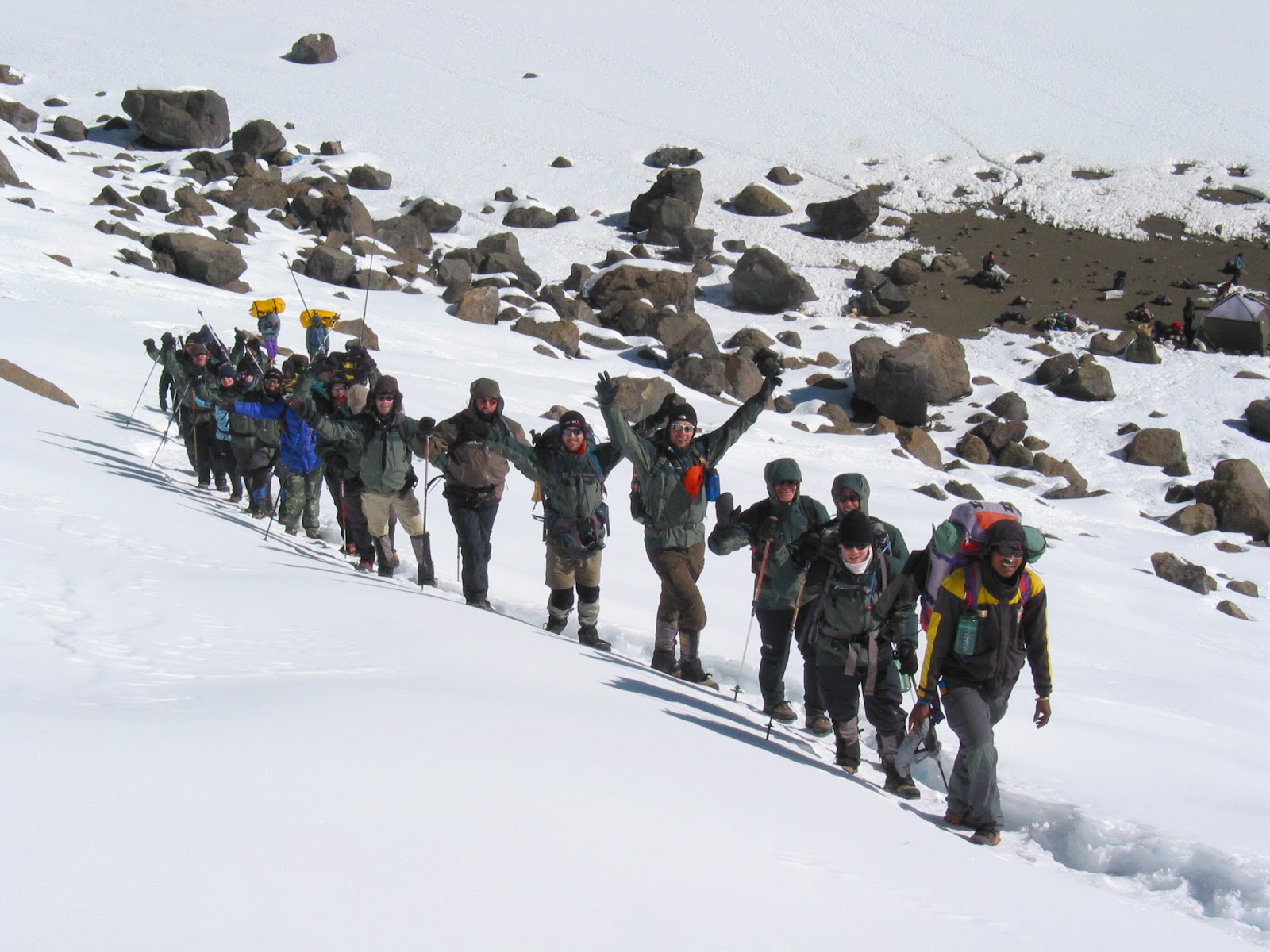When Is The Best Time to Climb Kilimanjaro?
One of the lesser known Mount Kilimanjaro facts is that you can hike the world’s tallest freestanding mountain almost any time of the year. So, how do you decide when to schedule your climb?
Most people use three key factors to help them book a date: their schedules, the typical seasonal weather on Kilimanjaro, and the usual crowds. One of these has a greater impact on your chances of reaching the summit than the others. That’s why we’ll be giving you the intel about each of them so you can book the right dates for your Kilimanjaro hike.
How to Find the Best Time to Climb Kilimanjaro
Just like booking a traditional vacation, you’ll need to schedule your Kilimanjaro hike knowing a few facts beforehand.
1. Your Schedule Will Take the Most Precedence
You’ll need to take off from work or school for at least 10–12 days in order to complete the Mount Kilimanjaro trek up to Uhuru Peak.
But that’s just climbing and acclimatizing time. That doesn’t take into account time for traveling to Tanzania or the extra time you may want to spend going on a wildlife safari afterward.
It may not be easy for you, your hiking buddy, or your family to get this much time off at random points during the year.
The most popular times’ people choose to hike Kilimanjaro — based on their schedules alone — are:
- December: During the holiday season, many people take off for vacation or holiday, which gives them plenty of travel days to get to Tanzania and climb Kilimanjaro. Bonus: Schools are usually out during this time too.
- Early January: When you want to kick off the New Year with an amazing accomplishment instead of a New Year’s resolution, you won’t be alone. Many hikers choose this time to hike.
- June, July, and August: Those who choose to stay home during the holidays will typically take their vacations in the summer, also when traditional schools in the US, UK, and Canada are not in session.
After you figure out when you can take time off and skip town, you’ll want to make sure you’re not heading straight into one of the two Kilimanjaro rainy seasons.
2. Consider the Seasonal Weather on Kilimanjaro
When you hike Kilimanjaro, you travel through five distinct climate zones, each with their own seasonal weather patterns and temperatures:
- The Cultivated Zone is where you’ll find the most annual rainfall.
- The Rainforest Zone will be warm and humid with a higher probability of rain during the rainy season and during the weeks on either side of the rainy season.
- The Heath and Moorland zone is slighter dryer than the first two with daytime temps as high as 100° F (40° C) and nighttime lows below freezing.
- The Alpine Zone is like, well, a desert. It’s sunny and dry during the day and sub-zero cold at night. Waking up to frost and snow is common during the winter months.
- The Arctic Zone, or Ice Cap, at the summit can be icy, snowy, and averages about 20° F (-6° C). Its constant high winds create a wind chill that feels well below zero.
The higher you trek, the harder it is for your body to regulate your temperature and keep you warm. As you ascend to cooler climate zones, your body works overtime to deliver oxygen to your organs when it’s already low on oxygen thanks to being at high altitude.
Since it’s taking your body much longer to circulate blood and oxygen to your extremities, your hands, feet, and the tips of your nose and ears will feel extremely cold.
That’s why, if you’re not used to hiking in cold or rainy weather, you’ll want to choose a time when Kilimanjaro’s weather is most favorable (i.e., dry and warm).
Let’s walk through what it’s like to hike Kilimanjaro, month by month:
January – March
Climbing Mount Kilimanjaro from January through March is ideal for many newbie hikers. The average temperature on the trail is warmer than other times of the year, and the rainfall is low and infrequent.
As you approach March it’s not Kilimanjaro’s driest season, but it offers sunny, cloudless skies for the best views atop the Roof of Africa. This season is also the highest for seeing accumulated snowfall on the trail, which makes for even cooler photos.
May – August
May through August hikes are popular because, even though April’s rainy season can spill over into early May, it’s generally drier with a comfortable average temperature in the low 70s F (or low 20s C).
August is one of the driest months on Kilimanjaro. So, if you’re totally against hiking in the rain, treks held during this month are for you. Plus, since there’s hardly any cloud cover, visibility will be at its highest too.
September – December
September through December is peak climbing season because the weather goes from cool to warm and there’s very mild rainfall (aside from the region’s second rainy season in November).
September is another of Kilimanjaro’s driest months and the average 70°F (21°C) temperature make it perfect for climbers unfamiliar with hiking in inclement weather.
April and November
There are two rainy seasons on Kilimanjaro: The “long” rainy season ranges from mid-March through April, while the “short” rainy season only lasts during November.
That’s why April and November are the least popular times for a Kilimanjaro hike. Cold, wet conditions create mud, which is harder to trek through and the expected precipitation adds an extra layer of damp to your camping situation, as well as snow, and ice closer to the summit.
You won’t feel motivated to reach the summit if you’re feeling miserable, cold, and wet.
Remember, though, that just because you book a hike outside of these times doesn’t mean you’re guaranteed a dry climb! Expert hikers always expect and prepare for rain. With all the different climates we mentioned above, chances are high that you’ll see precipitation at least once on your trip to the summit.
These are just general guidelines to the weather on Kilimanjaro, but rainy seasons can vary every year. Sometimes they’re earlier with heavy downpours and sometimes they’re late and super mild.
The only positive thing about hiking during a less-than-ideal season is that you’ll pretty much have the whole mountain to yourself!
3. Think About the Potential Crowds
Mount Kilimanjaro is one of the most popular tourist destinations in the world. That’s why certain Kilimanjaro hiking routes and times of the year are busier and far more crowded than others.
Since dry season packs better views, clear, unobstructed skies, and plenty of sunshine to keep you going, these are the most popular times to hike Kilimanjaro.
It’s no surprise that the favorable weather in June through October brings the most crowds. However, the trails are large and there are always gaps between hiking groups, so you will have plenty of opportunities to enjoy yourself in the great outdoors.
But if you’re seeking a personal journey of enlightenment, we understand that having all that extra noise may not be your ideal vision of zen-like peace and quiet.
For a more secluded nature experience, you may want to consider hiking during one of the colder or slightly rainier seasons. Veteran hikers won’t mind a little wet weather climbing — especially since most of the rainfall happens in the afternoons and most of your hiking takes place in the mornings.
You often won’t have to spend that much time in the rain to enjoy quiet campsites and peaceful trails.
And if it’s cold enough, that afternoon or evening rain may turn into a beautiful snowy vista you’ll wake up to in the morning.
For adventurers who appreciate a challenge in order to enjoy the beauty of snow-capped trails and the chance to take stunning photos of the mountain in its icy splendor, off-season treks will give you an opportunity that many newbie hikers don’t get.
Just remember that, even though the trails are less crowded, hiking before the rainy season is always a bit of a gamble. Since the rainiest months are April and November, hikes right before this time (i.e., February and March or October and September) can be a huge payoff, if you prepare correctly.
First, the weather is mild and the skies are cloud-free (like the calm before the rainy season storms).
Second, many hikers hoping to avoid the rainy seasons at all costs won’t book during April or November or the months that lead into them. That makes the trails less crowded.
But what if you’re doing a Kilimanjaro hike solo?
In this case, not meeting anyone on the trail can get a bit lonely. You may want to hike during the peak season in order to meet as many new friends as possible and share your adventure (and swap photos!).
Ready to Book the Date for Your Best Time to Climb Kilimanjaro?
Now that you know a few factors that go into deciding on the best time to climb Kilimanjaro, it’s time to partner with a trekking company offering hiking dates that meet your needs.
As we mentioned, you’ll want to think about your personal schedule, your tolerance for inclement weather, how you handle being out in the cold for extended periods of time, and how many tourists you’d like to bump into on the trails.
A trustworthy hiking outfit will have the experience to schedule the right times to hike Kilimanjaro safely.
Since April and November are the rainiest months on Kilimanjaro, and not ideal for trekking safely, almost no companies offer treks during that time — including Tusker. Be careful of companies wishing to take you up the trails at this time as they can be very dangerous.
Aside from those two months, we operate climbs every month out of the year, and are happy to say that 90% of our climbers reach Uhuru Peak safe and sound!



